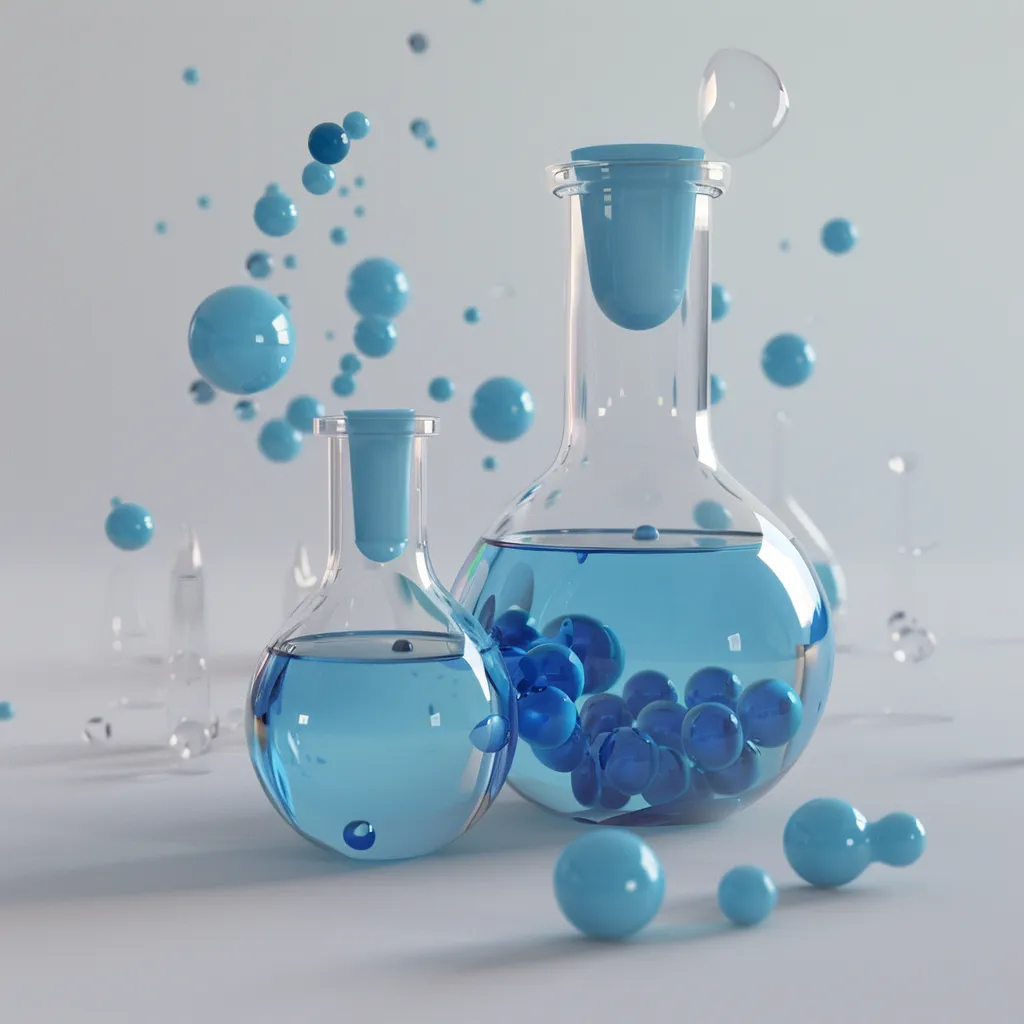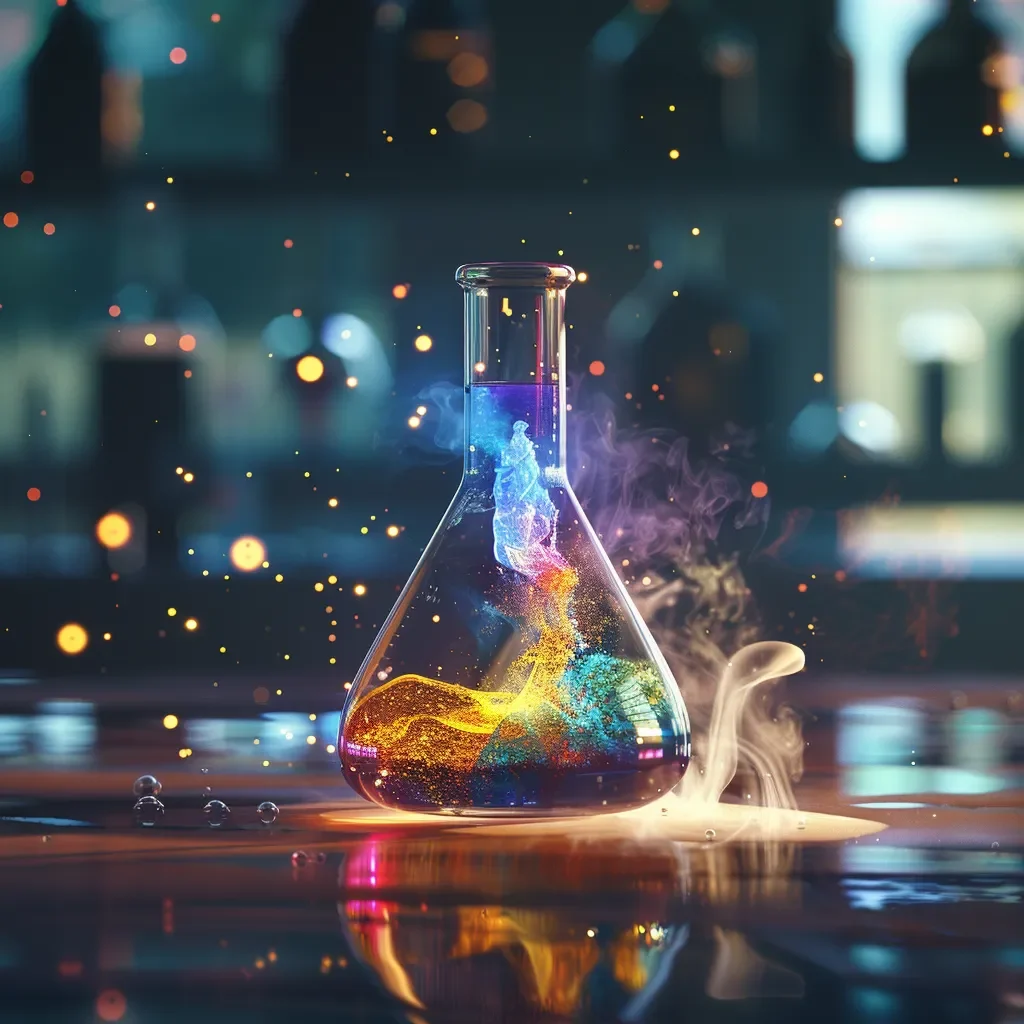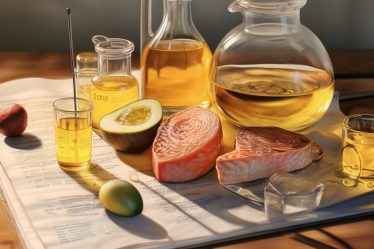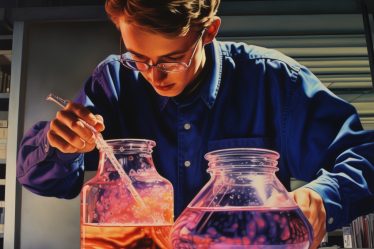
Chemical kinetics focuses on the speed, or rate, at which chemical reactions occur.
Unlike thermodynamics, which explains whether a reaction can happen, chemical kinetics examines how fast it happens. By studying chemical kinetics, you can identify the factors that influence reaction rates and learn how to control these rates for applications in industries, biology, and environmental processes.
Chemical Kinetics and Catalysts: Key Takeaways
In a hurry? Here’s a quick summary of the main points on chemical kinetics:
🟠 Reaction rate measures how fast reactants turn into products. It’s influenced by factors like concentration, temperature, and catalysts.
🟠 Collision theory explains that molecules must collide with enough energy and in the right orientation for a reaction to happen.
🟠 Activation energy is the minimum energy required for a reaction to occur, and catalysts lower this energy to speed up reactions.
🟠 Rate laws are mathematical models used to predict how changes in concentration affect the speed of a reaction.
If you find kinetics and catalysts challenging, don’t worry! Personalized tutoring or interactive chemistry lessons make these concepts more straightforward. Explore more chemistry topics and broaden your knowledge with our free World of Chemistry blogs.
What is Chemical Kinetics: The Basics
Chemical kinetics studies how fast chemical reactions occur and what factors influence their speed. It focuses on reaction rates—how quickly reactants change into products—while thermodynamics only tells you if a reaction can happen. In kinetics, you measure how the concentration of reactants or products changes over time.
You can use chemical kinetics to break down the reaction mechanism, which explains the step-by-step process a reaction follows. By knowing these steps, you can adjust and control reaction speed, which is especially useful in industries like pharmaceuticals, where timing and efficiency matter.
Kinetics also involves rate laws and constants, which are mathematical models showing how reactant concentration affects the reaction rate. For instance, increasing the concentration of a reactant often speeds up the reaction. These models help you predict how reactions will behave under different conditions.
Studying chemical kinetics allows you to control and fine-tune reactions. This makes it valuable in laboratory experiments and large-scale industrial processes, where improving reaction speed and efficiency can lead to better results.
Factors Affecting Reaction Rates in Chemical Kinetics
Several factors influence how fast a reaction occurs. You can adjust these factors to speed up or slow reactions, which is important in experiments and industrial processes. The main factors that affect reaction rates include concentration, temperature, catalysts, and the physical state of reactants.
Common Factors That Affect Reaction Rates
| Factor | Effect on Reaction Rate | Example |
| Concentration | Higher concentration increases reaction speed | Burning in pure oxygen happens faster than in air |
| Temperature | Higher temperature increases molecular collisions | Cooking food faster at higher temperatures |
| Catalysts | Lowers activation energy, speeding up the reaction | Enzymes in the body speed up biochemical reactions |
| Surface Area | More surface area increases the rate in solid reactants | Powdered solids react faster than large solid chunks |
How Concentration Influences Reaction Rates
The concentration of reactants plays a significant role in reaction rates. When you increase the concentration of reactants, you increase the number of molecules available to collide and react. More collisions lead to a faster reaction. This relationship is often described using the rate equation, which shows how the reaction rate depends on reactant concentration.
For example, burning is faster in pure oxygen than in regular air because the concentration of oxygen is higher. In chemical reactions, the law of mass action states that the reaction rate is directly proportional to the concentration of the reacting substances.
The Role of Temperature in Chemical Kinetics
Temperature has a major effect on reaction rates. As temperature increases, molecules move faster, leading to more frequent and energetic collisions. The Arrhenius equation explains this relationship between temperature and reaction rate. In simple terms, a higher temperature means more molecules have enough energy to overcome the activation energy, which is the energy barrier that must be crossed for a reaction to occur.
For example, cooking food at higher temperatures speeds up the chemical reactions that break down ingredients. This is why food cooks faster in a hot oven compared to a cooler one.
Catalysts and Their Role in Reducing Activation Energy
Catalysts speed up chemical reactions by lowering the activation energy without being consumed in the reaction. Catalysts provide an alternative pathway for the reaction, making it easier for molecules to collide with enough energy to react.
For instance, enzymes in your body act as biological catalysts, speeding up reactions that would otherwise take too long to support life. In industrial processes, catalysts are used in everything from producing fertilizers to refining oil, making reactions more efficient.
Benefits of Using Catalysts
- Catalysts reduce the energy required for molecules to collide effectively.
- They speed up reactions without being consumed in the process.
- Catalysts allow reactions to occur at lower temperatures, saving energy.
- Industrial processes use catalysts to make production faster and cheaper.
Collision Theory and Activation Energy: Keys to Understanding Reaction Mechanisms
To explain how and why chemical reactions occur, you need to look at collision theory and activation energy. Collision theory describes how particles must collide with enough energy and the right orientation to react. Activation energy is the minimum energy required for these collisions to lead to a reaction. Together, these concepts explain why some reactions are fast while others are slow.
What is Collision Theory?
Collision theory states that for a reaction to occur, reacting particles must collide with each other. However, not all collisions result in a reaction. To successfully react, particles need to collide with enough energy (greater than the activation energy) and with the proper alignment. If the collision doesn’t meet these conditions, the molecules simply bounce off each other without reacting.
For example, when hydrogen and oxygen gas molecules collide under normal conditions, most collisions don’t result in water formation because the particles lack the necessary energy and orientation. This is why a spark or heat is needed to ignite the reaction, ensuring enough molecules have the right energy to collide effectively.
The Importance of Activation Energy in Chemical Reactions
Activation energy is the minimum energy required for a reaction to take place. On an energy diagram, it’s represented by the energy “hill” that molecules must overcome. If the molecules don’t have enough energy to get over the hill, no reaction occurs. Temperature increases the number of molecules with enough energy to surpass the activation energy, which speeds up the reaction.
For example, lighting a match provides the heat needed to overcome the activation energy required for the chemicals in the match head to ignite and burn.
How Catalysts Affect Collision and Activation Energy
Catalysts lower the activation energy needed for a reaction, making it easier for particles to collide and react. By providing a different reaction pathway, catalysts allow more collisions to result in successful reactions, even at lower temperatures.
For instance, catalytic converters in cars use catalysts to speed up the breakdown of harmful gases into less toxic ones. Without catalysts, these reactions would require much higher temperatures and wouldn’t happen quickly enough to be useful in vehicles.
How to Measure and Model Reaction Rates
In chemical kinetics, you can measure and model reaction rates to predict how fast a reaction will occur. Knowing how to track and calculate reaction speeds helps you control and improve reactions in labs and industries. Scientists and engineers use different methods to measure rates and apply mathematical models to describe these reactions.
Experimental Methods to Measure Reaction Rates
You measure reaction rates by tracking changes in reactant or product concentration over time. The method you use depends on the type of reaction and what you need to measure.
- Spectrophotometry: This method works well when the reaction causes a color change. You measure how much light a solution absorbs at different stages of the reaction. For example, as a substance reacts and changes color, the amount of light it absorbs changes, too, which tells you how fast the reaction is happening.
- Titration: Here, you take samples at regular intervals and use another substance to neutralize one of the reactants. This helps you find out how much of the reactant remains. It’s commonly used in acid-base reactions.
- Manometry: For reactions that involve gases, this method tracks changes in gas pressure. For instance, when a reaction produces carbon dioxide, you can measure how quickly the pressure builds to figure out the reaction rate.
Each of these methods provides a clear way to monitor how fast a reaction is progressing. You can then use this information to fine-tune the conditions to speed up or slow down the process, depending on your goal.
Mathematical Models for Predicting Reaction Rates
Once you measure a reaction’s rate, you can use mathematical models to predict how different conditions will affect it. The most common models are rate laws and integrated rate laws.
A rate law shows how the concentration of reactants affects the reaction rate. The general form is:
Rate = k [A]m [B]n
Where:
- k is the rate constant, which is unique to each reaction.
- [A] and [B] are the concentrations of the reactants.
- m and n are the reaction orders, which tell you how each reactant’s concentration affects the rate.
For example, in a first-order reaction, the reaction rate increases directly with the concentration of one reactant. In a second-order reaction, the rate depends on the concentrations of two reactants or the square of one reactant’s concentration.
You can also use integrated rate laws to calculate how reactant concentrations change over time. This helps you determine how long a reaction will take to reach a certain stage, which is helpful in planning experiments and industrial processes.
Real-World Applications of Chemical Kinetics
Chemical kinetics is used in many industries to optimize processes, improve efficiency, and minimize waste. By controlling reaction rates, you can achieve better results in manufacturing, environmental science, and food production. Below are some key applications of chemical kinetics:
- Pharmaceuticals: Controlling reaction speed ensures efficient and safe drug production.
- Environmental Science: Kinetics helps predict how pollutants break down in nature.
- Food Science: Slowing reaction rates can extend food shelf life and maintain quality.
- Industrial Manufacturing: Chemical kinetics optimizes reactions in oil refining and polymer production.
Summing Up Chemical Kinetics and Reaction Rates
Chemical kinetics explains how fast reactions happen and what affects their speed. The reaction rate depends on factors like concentration, temperature, and catalysts. Higher concentrations increase reaction speed, while higher temperatures provide more energy for particles to collide with enough force to overcome the activation energy.
Is kinetics tricky for you? A chemistry tutor can provide personalized lessons tailored to your needs, making organic and inorganic chemistry understandable and enjoyable.
Suppose you’re looking for a chemistry tutor. In that case, a simple search like “organic chemistry tutor Liverpool” or “inorganic chemistry teacher Edinburgh” on platforms like meet’n’learn can help you find the right private teacher for your needs.
If you prefer group learning environments, you can easily find chemistry classes nearby by searching for “chemistry classes Leeds” or “chemistry lessons London” online, leading you to local schools or educational centers.
Chemical Kinetics and Catalysts: Frequently Asked Questions
1. What is chemical kinetics?
Chemical kinetics studies the speed of chemical reactions and the factors that affect reaction rates.
2. How does temperature affect reaction rates?
Higher temperatures increase molecular collisions, speeding up the reaction by providing more energy to overcome the activation energy.
3. What is a catalyst in chemical kinetics?
A catalyst speeds up a reaction by lowering the activation energy without being consumed during the reaction.
4. How does concentration impact the rate of a reaction?
Increased concentration leads to more frequent collisions between reactant molecules, typically speeding up the reaction.
5. What is collision theory in chemical kinetics?
Collision theory explains that molecules must collide with sufficient energy and correct orientation for a reaction to occur.
6. How do you measure the reaction rate?
You measure reaction rates by tracking changes in reactant or product concentration over time using methods like spectrophotometry or titration.
7. What are rate laws in chemical kinetics?
Rate laws are mathematical expressions that show the relationship between reactant concentrations and the speed of a chemical reaction.
8. How does activation energy affect a chemical reaction?
Activation energy is the minimum energy required for a reaction to take place, and reactions happen faster when more molecules can overcome this barrier.
References:
1. Britannica
2. LibreTexts Chemistry
3. Wikipedia



